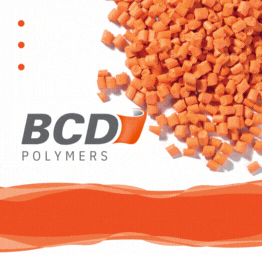Chemical Recycling Europe supports many of the priorities mentioned in the NGO’s joint statement:
-
Priority to favour waste prevention and reduction as well as reuse in full alignment with the EU Waste Hierarchy.
-
Priority to prevent shipping of plastic waste to non-EU countries, especially if they do not have the necessary infrastructure, to stimulate recycling and recycling infrastructure in the EU and to avoid pollution elsewhere.
-
Priority to encourage the creation of plastic products that follows the principle of the waste hierarchy. This implies support for eco-modulation and measures to incentivize increased amount of recycled content in plastic products, and more generally, in a circular design. The purpose of which is to stimulate the demand for recycled content and circular materials. On this basis, we support an Extended Producer Responsibility (EPR) expanded to other groups beyond packaging and WEEE.
-
Priority to clarify the definition and framework for chemical recycling.
We would, however, like to bring some elements of clarification related to Priority 9 regarding chemical recycling:
I. Chemical Recycling is circular by definition: Chemical recycling represents an overarching category composed of different technologies that aims to close the material loop by converting plastic waste currently not recycled into high-quality products. These recycling techniques (sometimes described as Upcycling or Advanced Recycling) reflects the essence of what circularity is by enabling the direct replacement of virgin material with its identical quality and properties. They, for instance, enable the inclusion of recycled content in food-grade applications. These various technologies convert polymeric waste in different value-added materials like monomers, naphtha, syngas, waxes and etc.
Chemical recycling takes on a clear circular approach as the definition of chemical recycling excludes energy recovery: “Chemical Recycling is defined as any reprocessing technology that directly affects either the formulation of the polymeric waste or the polymer itself and converts them into chemical substances and/or products whether for the original or other purposes, excluding energy recovery”.
II. Input characteristics should not be restricted: The input of chemical recycling has very little value compared to the input of mechanical recycling. Therefore, chemical recycling input naturally falls into a category that tends to be contaminated and/or degraded. We, however, fail to see the reason for restricting chemical recycling to contaminated and degraded plastics. Some plastics are more complex and some do not represent a stream economically viable for mechanical recyclers and therefore this restriction prevents the possibility for these plastics to be recycled. Opening broader plastic waste streams to chemical recycling would enable more plastics, that are currently not being recycled, to be recycled and would therefore complement current efforts made by mechanical recyclers.
III. Input origin should not be restricted: Saying that the input should not come from a separate collection, would mean that chemical recycling would not be able to capture the rejects from mechanical recyclers, which represent a significant amount of plastic waste. In addition, mechanical recycling is also not able to recycle some separate collected waste streams e.g. EPS, LDPE,… Therefore, we ask what the best recycling alternative would be for those separate collected waste streams rather than chemical recycling? On the other hand, in addition to new plastics, the output of chemical recycling can be used in the production of a variety of materials which might bring more value than plastics and therefore the output should not be limited to new plastics. Furthermore, unwanted plastic waste of a larger variety can be transformed into alternative oils, waxes, and solvents. This also results in a reduction of crude oil as a raw material and creation of necessary and useful materials for various industries.
IV. Restrictions lead to inconsistencies with Priority 10: Restricting the input characteristics and origins for chemical recycling would be inconsistent with Priority 10 phasing out waste incineration. Given that the plastic waste going to chemical recycling would otherwise be sent to Energy-from-Waste, the restrictions above imply that you implicitly favour this waste going to Energy-from-Waste. This represents a missed opportunity to recycle the plastic waste coming from the rejections of mechanical recycling (and therefore from separate collection) or a waste stream technically or economically difficult to recycle by mechanical recyclers.
V. Chemical recycling targets a new demand: Chemical recycling specifically targets the demand for virgin-quality recycled content that mechanical recycling can fulfil only for PET and HDPE for a few cycles under strict conditions (for now, and we hope that innovation will enable more!). It targets a circular product and demand that currently cannot be fulfilled.


